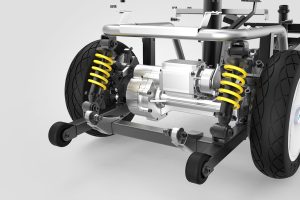In the realm of electric powertrains, the choice between a transaxle and a transmission is critical, as it directly impacts the performance, efficiency, and cost of the vehicle. Let’s delve into the intricacies of these two components and understand their disparities.
Transaxle: Unveiling the Power and Efficiency
Power and Efficiency
- Transaxles are integrated units that combine the functions of a transmission and a differential into a single component. They are designed to efficiently distribute power from the electric motor to the wheels.
- In terms of efficiency, transaxles generally outperform traditional transmissions. They have fewer mechanical losses due to their compact design and direct power transfer, resulting in a higher overall system efficiency.
Cost Considerations
- When it comes to cost, transaxles can be more expensive upfront compared to standalone transmissions. The integration of components and specialized engineering can increase their price.
Size and Specifications
- Transaxles are typically more compact and have a reduced number of moving parts compared to transmissions. This reduced size allows for more flexibility in vehicle design, especially in electric cars where space is a premium.
Lifespan and Age
- Transaxles are known for their longevity and durability. With fewer components experiencing wear and tear, they often have a longer lifespan, reducing the need for replacements or repairs.
- As electric vehicles age, the reliability of the transaxle can significantly contribute to the overall value and longevity of the vehicle.
Transmission: A Traditional Approach
Power and Efficiency
- Transmissions in electric powertrains, while less common than transaxles, can still be found in some setups. They typically feature a more complex gear-shifting mechanism.
- In terms of efficiency, traditional transmissions can have more mechanical losses due to the multiple gears and the need to shift between them. This can result in slightly lower overall system efficiency compared to transaxles.
Cost Considerations
- Transmissions can be a cost-effective choice in some scenarios, particularly for manufacturers looking to adapt existing internal combustion engine designs for electric vehicles. Retrofitting existing transmissions can be less expensive than developing new transaxles.
Size and Specifications
- Transmissions tend to be larger and heavier than transaxles due to their complex gear systems. This can limit design options and impact the overall dimensions of the vehicle.
Lifespan and Age
- The longevity of a transmission can vary depending on its design and quality. Multiple moving parts and the need for regular maintenance can affect its lifespan and may require more frequent replacements as the vehicle ages.

Conclusion
In summary, the choice between a transaxle and a transmission in electric powertrains is a pivotal decision that involves several critical factors. Transaxles offer superior efficiency, compact size, and longer lifespans, albeit at a higher initial cost. On the other hand, transmissions can be more cost-effective for certain applications but may sacrifice efficiency and longevity. Manufacturers and engineers must carefully consider these factors, along with their specific budgets, performance requirements, and vehicle designs, to determine which option aligns best with their goals.
For more information on transaxle vs transmission, you can visit Rotontek’s comprehensive guide.